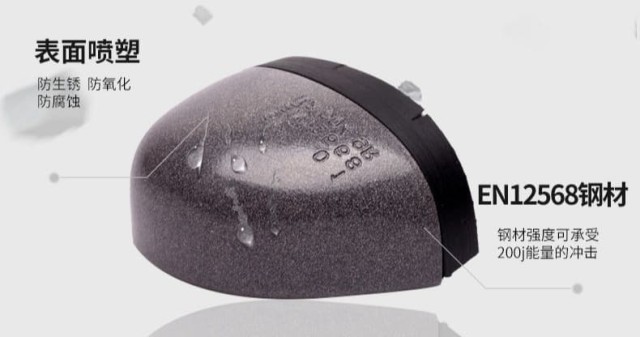When choosing safety footwear, the debate between composite and steel toe protection isn't about which is "better"—it's about which solution excels in your specific work environment. While both meet ASTM F2413 impact resistance standards (200J drop force protection), composite toes offer distinct advantages in electrical work, cold storage, security-sensitive areas, and other specialized scenarios where steel toes create unnecessary compromises.
ASTM Standards Decoded: Equivalent Protection, Divergent Applications
The safety baseline: Both composite and steel toe caps must withstand a 200J impact force (equivalent to a 50lb weight dropped from 4 feet) to earn ASTM certification. This means neither material compromises on core safety—but their performance diverges in real-world conditions.
Where composite toes pull ahead:
- Non-conductive materials eliminate electrical shock risks (critical for utility workers)
- Non-metallic construction bypasses metal detector triggers (ideal for airports, prisons)
- Thermal insulation prevents temperature transfer (-40°F to 140°F stability)
Steel remains the default for heavy manufacturing, but modern composites now match protection levels while solving environmental drawbacks.
Weight and Comfort: The Lighter Advantage You Can Feel
While steel toe caps add ~30% more weight than composites, the real difference emerges over a 10-hour shift:
Fatigue factors:
- Steps per day: Warehouse workers average 15,000 steps—composites reduce energy expenditure
- Heat buildup: Steel conducts 5x more thermal energy, increasing sweat/friction
- Flex points: Composite materials allow more natural foot flexion
Industries like forestry and EMS report fewer foot fatigue injuries after switching to composite-toe models, according to observational data.
Hazard-Specific Superiority: 3 Scenarios Where Composites Dominate
1. Electrical Work: Non-Conductive = Non-Negotiable
Steel toes can complete circuits—a deadly risk near live wires. Composite materials (fiberglass, Kevlar®) provide ASTM F2413 protection without conductivity.
2. Cold Storage: No More "Toesicles"
Steel acts as a heat sink in freezers (-20°F), chilling feet through conduction. Composites insulate like a thermos, maintaining stable temperatures.
3. Security Checkpoints: Walk Through Metal Detectors Uninterrupted
Prison guards, airport crews, and MRI technicians benefit from non-metallic composites that don't trigger sensors or distort magnetic fields.
Longevity Under Stress: How Composites Handle Extreme Conditions
Myth: "Composites wear out faster than steel."
Reality: Advanced materials like carbon fiber-reinforced polymers now match steel's durability while resisting:
- Corrosion from chemicals/saltwater
- Cracking in subzero temperatures
- UV degradation in outdoor environments
Field tests show composite toes maintain structural integrity for 2-3 years in harsh conditions—comparable to steel but without rust risks.
Cost-Benefit Analysis Beyond the Price Tag
While composite boots often cost 10-15% more upfront, consider:
✔ Reduced fatigue = fewer sick days
✔ No replacement for corroded steel toes
✔ Specialized protection avoids workplace violations
For electrical contractors, one avoided OSHA violation pays for 20+ pairs of composite boots.
Ready to upgrade your safety footwear strategy? 3515 partners with distributors and bulk buyers to deliver ASTM-certified composite toe boots engineered for your industry's unique hazards—because the right protection should weigh less, not matter less.
Products You Might Be Looking For:
View ASTM-certified steel toe work shoes
Explore customizable safety footwear
Browse heavy-duty steel toe boots
Related Products
- Customizable Anti-Smash Safety Boots for Wholesale & Private Label Manufacturing
- Wholesale Durable Breathable Safety Boots Custom OEM Manufacturer
- Durable Leather Safety Boots for Wholesale & Custom OEM Manufacturing
- Wholesale Leather Safety Boots with Customizable Protective Toe
- Wholesale Durable Safety Boots Manufacturer Customizable Steel Toe Work Boots
Related Articles
- Steel-Toe vs. Composite-Toe Boots: How to Choose the Right Safety Footwear for Your Job
- How to Choose Safety Footwear That Solves Steel Toe Shoe Problems Without Sacrificing Protection
- How to Choose Steel Toe Shoes That Balance Safety and Comfort
- How Steel Toe Shoes Prevent Injuries: The Science Behind Workplace Safety
- How Steel Toe Shoes Meet Safety Standards and Prevent Workplace Injuries




















